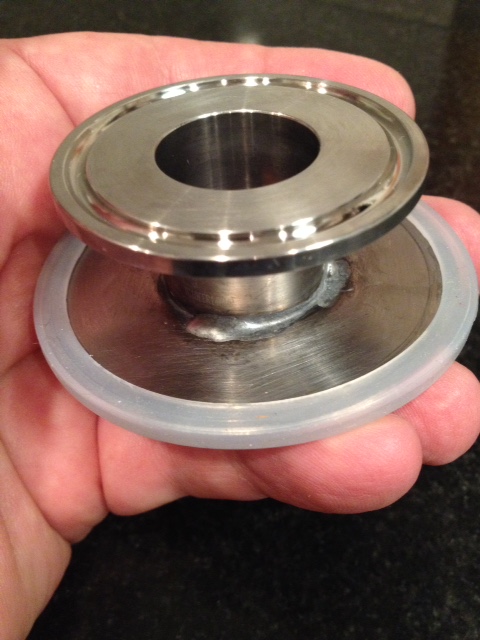I would think the advantage of being able to apply co2 pressure from above to diplace what comes out the bottom would still be a superior method no?
What you're suggesting is not a bad idea but I find that it's very easy to just blow a hole through your trub and yeast cake and leave most of it clinging to the sides (even without adding head pressure). I find that dumping (not harvesting) requires a slow hand and has to be done over several days. You get a lot the first day but then things have to settle for a day or 2 before you can do it again and you get about half of what you got the first day (repeat for 3 or 4 days getting half of the previous dump each time).
The open jar idea is nice because all that settling between dumps happens passively as Pliny says. And you get some visual confirmation that you got it all (or need to keep dumping after harvesting).
augiedoggy,
What I think is simple about this idea is that it is passive - there is nothing I have to do once the jar is attached to the conical. I'll attach the jar, fill the conical with wort, pitch the yeast, and let beer happen. A day or two later when the trub has settled but the yeast are still busy, I come back and remove the jar full of trub and replace it with a jar of wort that I saved in the refrigerator (or water when I forget to save wort). A couple of weeks later I come back and remove a jar full of settled yeast and store it in the refrigerator for use in another batch.
+1 on this except for this observation:
Fermentation creates a lot of convective currents that stir everything up including trub. You may find that it's so swirly, that no trub settles during active fermentation so your timing might be a little tight.
Here's my process (FWIW):
At the end of the boil, I whirlpool for 15 minutes and settle for another 30. Then I oxygenate my wort inline from my plate chiller on the way to the fermenter. I have my site glass (soon to be mason jar) attached to the dump valve and I leave the valve open. 4-8 hours or so later, I close the dump valve and empty my site glass of trub and cold break. Then I clean and sanitize it, reattach it and open the dump (glub glub is OK at this point).
Then I pitch my yeast.
After primary, the yeast settles into the siteglass along with a small amount of trub but it seems mostly to be in pretty clear layers. I just pour off any junk and collect the good stuff.
BTW, I don't want to hijack but I have a couple of crappy but brief videos I made for a friend that describes my closed transfer (pressurizing fermenter with co2) kegging process and equipment. It's not on topic but seems somehow related. If interested, PM me and I'll email links. Or if the OP doesn't mind, I can post here.







 ). That's why I have the 1-15 psi gauge mounted on my fermenter gas connection. A 1-60psi guage will not tell you accurately when you have 2-5 psi. Be warned.
). That's why I have the 1-15 psi gauge mounted on my fermenter gas connection. A 1-60psi guage will not tell you accurately when you have 2-5 psi. Be warned.